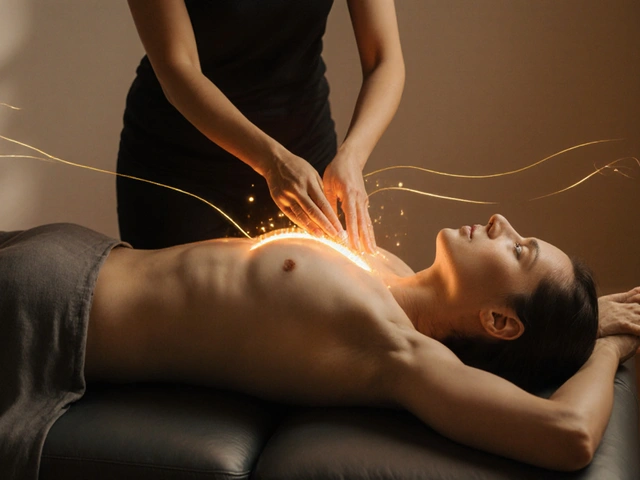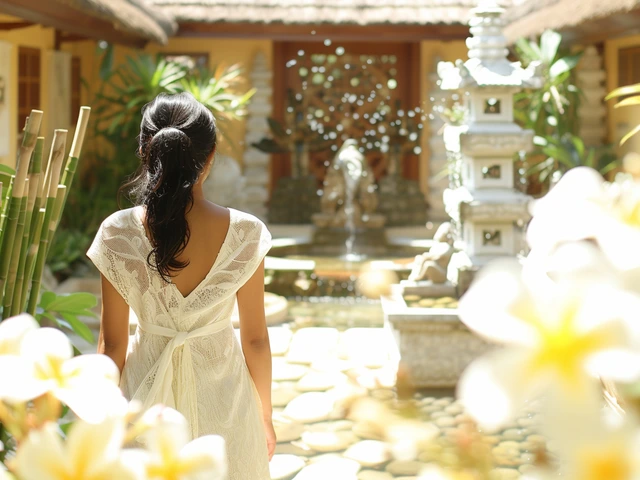Hammam: The Ancient Bathing Ritual That Revives Skin and Soul
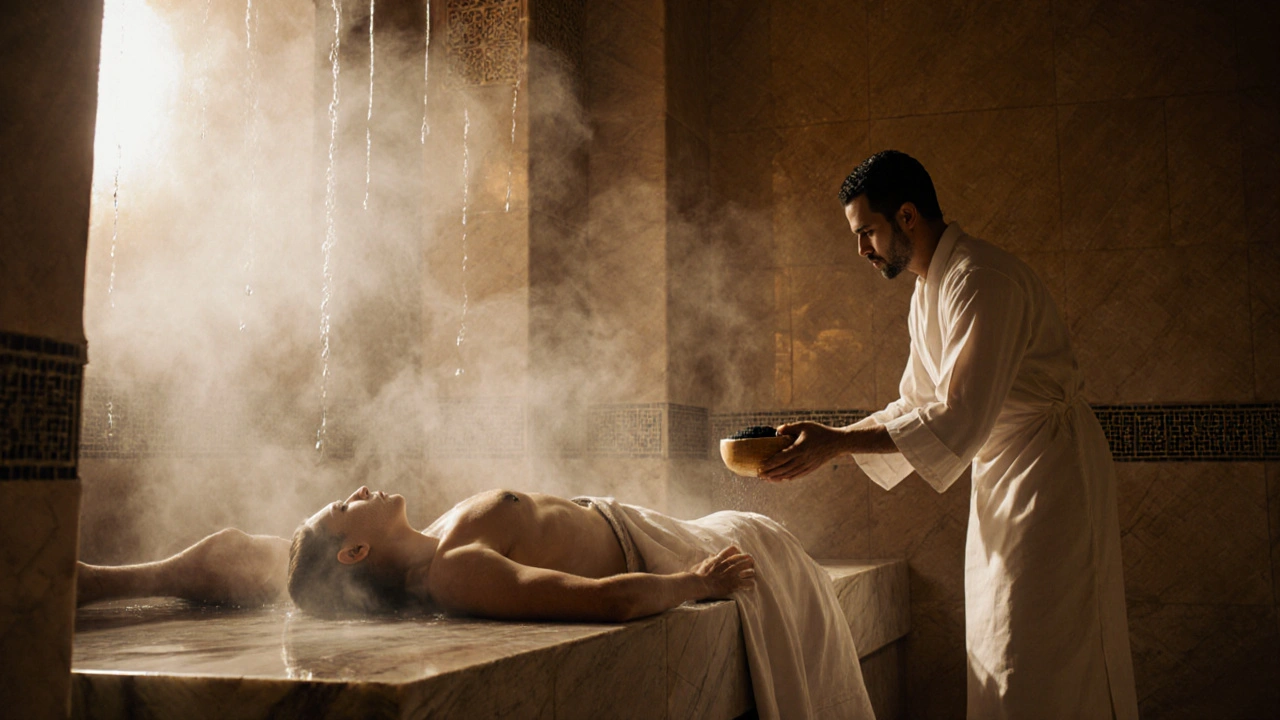
Hammam Suitability Checker
Check Your Suitability for a Hammam Experience
Imagine stepping into a room where the air is thick with warmth, the walls glow with soft golden light, and the scent of black soap and eucalyptus wraps around you like a hug. No phones. No clocks. Just steam, silence, and the gentle scrape of a kese glove gliding over your skin. This isn’t a luxury hotel gimmick - it’s the hammam, a centuries-old bathing ritual that’s been healing bodies and calming minds across North Africa and the Middle East for over a thousand years.
What Exactly Is a Hammam?
A hammam, also called a Turkish bath, isn’t just a hot shower or a sauna. It’s a full-body experience built on a sequence of heated rooms, each with a specific purpose. The process usually starts in a warm room to open pores, moves to a hotter room to sweat out toxins, and ends with a cool rinse or plunge. But the real magic happens in the middle - when a trained attendant, called a tellak, scrubs you down with a rough mitt and soaps you with natural black soap made from olive oil and eucalyptus.
Unlike a typical spa, where you’re left alone with a candle and some lavender oil, a hammam is deeply personal. The scrubbing isn’t gentle - it’s firm, rhythmic, and thorough. It removes layers of dead skin, unclogs pores, and leaves your skin so smooth it feels like silk. And yes, it can feel intense the first time. But after just one session, most people say they’ve never felt their skin so clean.
Why It Works: Science Behind the Steam
There’s more to a hammam than tradition. Studies show that prolonged exposure to heat and humidity improves circulation, reduces muscle stiffness, and helps the body eliminate toxins through sweat. A 2021 study published in the Journal of Clinical and Aesthetic Dermatology found that regular steam bathing improved skin hydration and barrier function in participants with dry, sensitive skin - results similar to those seen with topical moisturizers.
The black soap used in hammams is free of synthetic fragrances and harsh detergents. Made from olive oil and potassium hydroxide, it’s naturally antibacterial and gentle enough for eczema-prone skin. The kese glove - made from coarse, natural fibers - exfoliates without microplastics or chemical abrasives. That’s why dermatologists in Istanbul often recommend hammam visits for patients with acne or psoriasis.
And then there’s the mental reset. The ritual forces you to slow down. No screens. No talking. Just breathing in warm, moist air while your body is being tended to. This isn’t just relaxation - it’s a form of sensory deprivation that lowers cortisol levels. People who visit hammams regularly report better sleep, less anxiety, and a deeper sense of calm.
The Hammam Experience: What to Expect
If you’ve never been, here’s what actually happens - step by step.
- You arrive in a changing room, usually with lockers and towels provided. You’ll be given a thin cotton robe, a pair of slippers, and sometimes a headwrap.
- You move into the soğukluk (cooling room), where you relax for a few minutes to adjust.
- Next, you enter the ılıklık (warm room), where the temperature hovers around 35-40°C. You lie on a warm marble slab called a baltacı and let your body begin to sweat.
- The hottest room, the sıcaklık, hits 45-50°C. This is where the real work begins. The attendant brings in a bucket of warm water, pours it over your back, and applies the black soap.
- Then comes the scrub. The tellak uses the kese glove to scrub every inch of your body - arms, legs, back, even between your toes. It’s not painful, but it’s not soft either. Think of it like a deep-tissue massage for your skin.
- After the scrub, they rinse you off with warm water, sometimes using a rose-scented spray. Then you’re left to rest in the cooling room for 10-15 minutes while your body re-balances.
Most sessions last between 45 and 90 minutes. You don’t need to bring anything except a towel if you want to wrap up afterward. Many places offer optional add-ons - a head massage, a honey mask, or a herbal tea afterward.
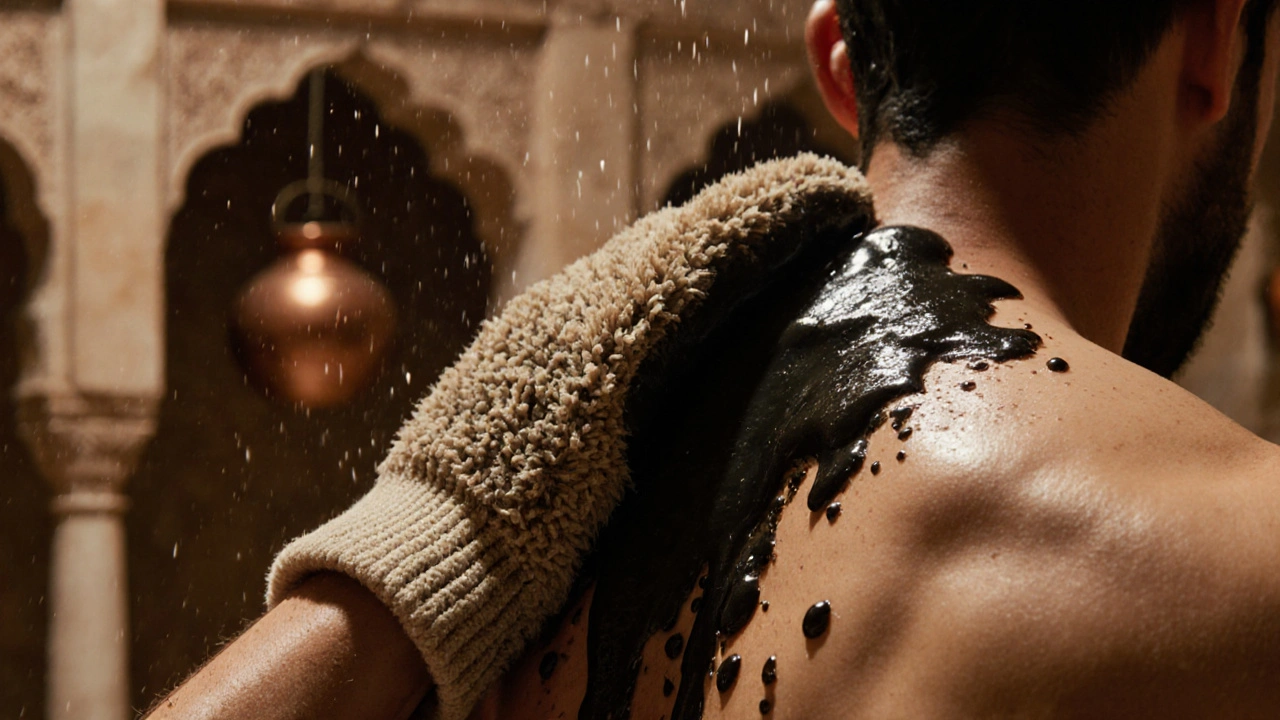
Where to Find a Real Hammam Today
You don’t need to fly to Istanbul or Marrakech to experience a true hammam. Cities like Paris, London, New York, and even Wellington now have authentic setups. Look for places that still use marble slabs, traditional black soap, and hand-scrubbing - not just steam rooms with a fancy name.
Real hammams don’t have loud music, neon lights, or spa packages with “detox” in the title. They’re quiet, simple, and focused on the ritual. Ask if they use a kese glove (not a loofah) and if the soap is made from olive oil. If they say yes, you’re in the right place.
In New Zealand, the Wellington Hammam Studio offers weekly sessions using imported Moroccan black soap and handmade kese gloves. Their founder, a former Istanbul spa therapist, trains every attendant in the traditional method. It’s not cheap - around $85 NZD - but it’s the closest you’ll get to a 14th-century ritual without leaving the country.
Who Should Try It - And Who Should Skip It
Most healthy adults can benefit from a hammam. It’s especially helpful if you:
- Have dry, flaky, or dull skin
- Struggle with muscle tension after workouts or long hours at a desk
- Feel mentally drained and need a reset
- Prefer natural, chemical-free skincare
But avoid it if you:
- Have open wounds, recent burns, or active skin infections
- Are pregnant (especially in the first trimester)
- Have severe cardiovascular issues or low blood pressure
- Get dizzy or nauseous in hot, humid environments
If you’re unsure, talk to your doctor. Some clinics in Turkey now offer hammam therapy as part of post-surgery recovery programs - but only under supervision.
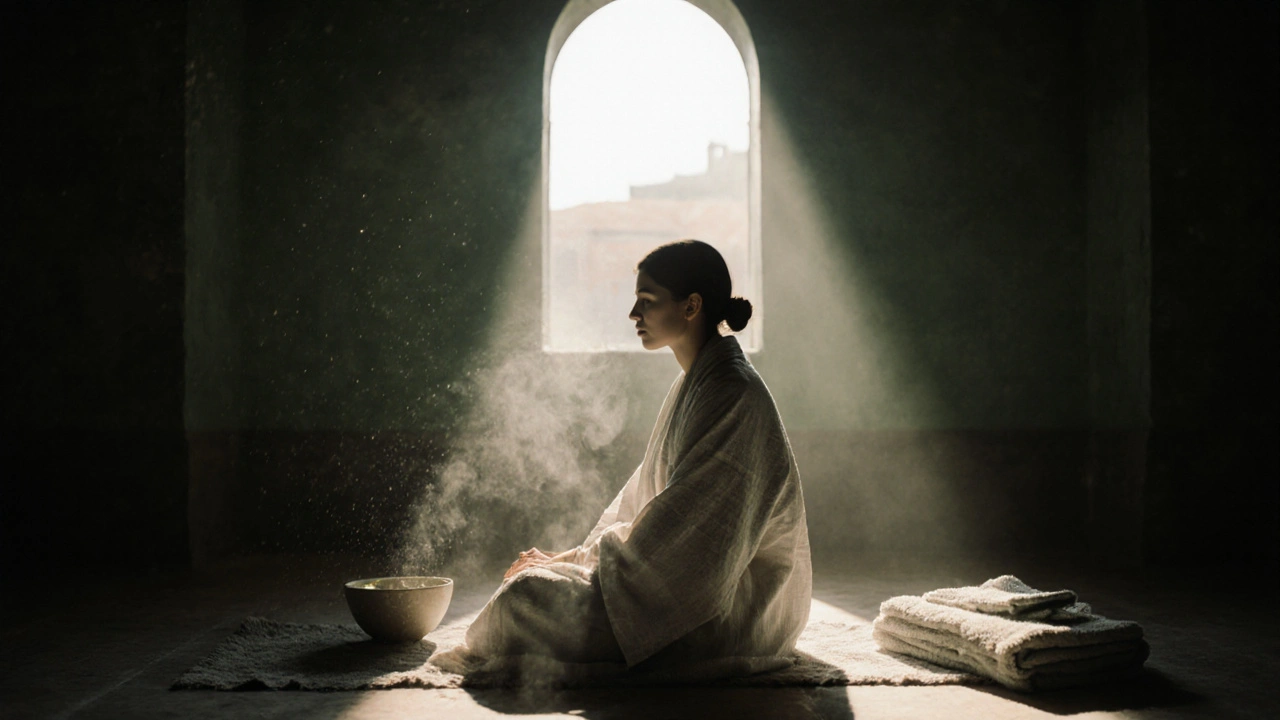
How Often Should You Go?
Once a month is ideal for most people. That’s enough to keep skin glowing and stress levels low without overdoing it. If you’re dealing with chronic skin issues, twice a month might help - but don’t go more than that. Your skin needs time to recover between deep scrubs.
And here’s a pro tip: Don’t shower with soap right after. Let your skin breathe for a few hours. The natural oils that rise to the surface after a hammam are your skin’s best defense. Apply a light oil - like argan or jojoba - only if you feel tightness.
The Bigger Picture: Why This Ritual Still Matters
In a world obsessed with quick fixes - 5-minute facials, overnight serums, and app-based meditation - the hammam is a quiet rebellion. It asks you to slow down. To sit with heat. To let someone else care for you. To be still.
This isn’t just about clean skin. It’s about remembering that your body deserves more than a rushed shower and a 30-second lotion rub. It deserves time. Attention. Ritual.
For centuries, hammams were community centers - places where people gathered, talked, healed, and connected. Today, they’re one of the last spaces where you can truly unplug and let your body lead the way. And in a world that never stops pushing, that’s worth more than any skincare product on the shelf.
Is a hammam the same as a sauna?
No. A sauna uses dry heat, usually above 70°C, to make you sweat. A hammam uses moist heat at lower temperatures (40-50°C) and includes a full-body scrub with natural soap and a kese glove. The hammam is a ritual; the sauna is just heat.
Does a hammam help with acne?
Yes. The combination of steam, gentle exfoliation, and natural black soap helps unclog pores and reduce bacteria on the skin. Many people with mild to moderate acne see improvement after 3-4 regular sessions. But if you have cystic acne or active breakouts, wait until they calm down before trying it.
How long does a hammam session last?
Most sessions last between 45 and 90 minutes, depending on whether you add extras like a head massage or herbal tea. The core ritual - steam, scrub, rinse - takes about 60 minutes.
Can I do a hammam at home?
You can mimic parts of it - take a long hot shower, use a natural exfoliating glove, and apply olive oil soap. But you won’t get the same deep heat or the hands-on scrubbing from a trained tellak. The ritual is as important as the steps - and that’s hard to replicate alone.
Is a hammam safe during pregnancy?
Most experts advise against it in the first trimester due to the risk of overheating. After the first trimester, some women enjoy gentle steam sessions without scrubbing, but always check with your doctor first. Skip the hot room and stick to the warm room if you’re unsure.
What should I wear during a hammam?
You’ll be given a thin cotton robe or towel to wear to the changing room. During the scrub, you’ll be asked to remove it. Most people feel comfortable being nude - it’s standard practice. If you’re uncomfortable, you can wear a swimsuit, but the scrub won’t be as effective.
Do I need to tip the attendant?
In many places, tipping isn’t expected but is appreciated. If the service felt personal and skilled, leaving 10-15% is a kind gesture. In some cultures, it’s customary to offer a small gift - like a bar of soap or a tea set - instead of cash.
If you’ve been feeling worn down - by stress, by screens, by the daily grind - the hammam isn’t a luxury. It’s a reset button. And sometimes, the most powerful thing you can do for your body is to let someone else take care of it - slowly, gently, and with deep respect.


